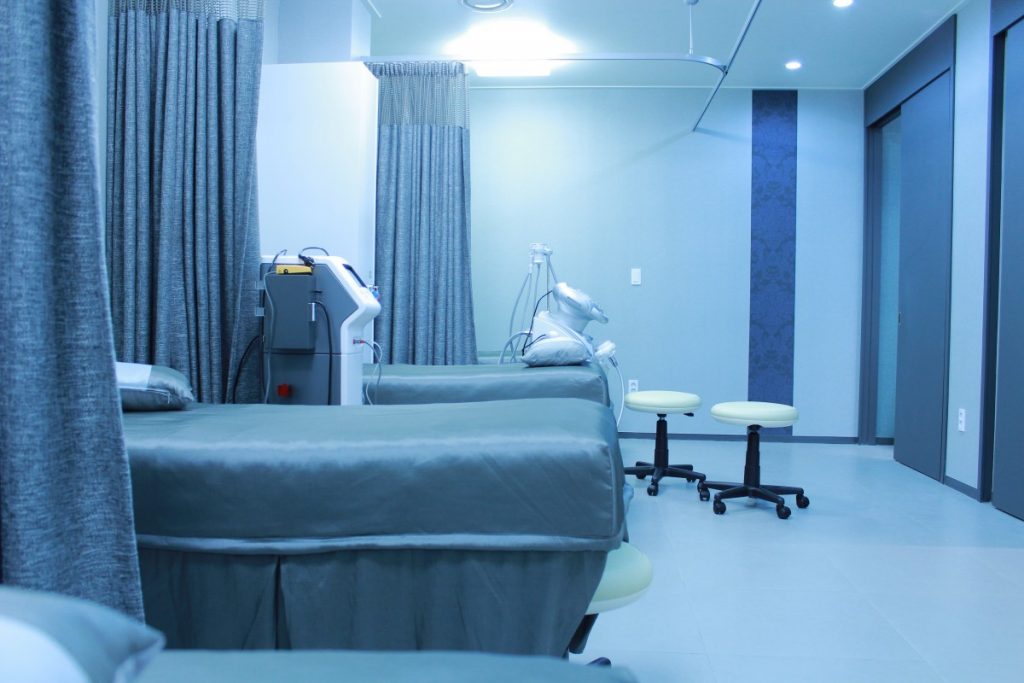Upper GI Endoscopy
How the Test is Performed
Upper GI Endoscopy may be performed in an emergency situation to diagnose and control severe blood loss, but is more often a planned elective procedure performed as a day case. It may be done in an operating theatre, or a purpose-built unit, often called an endoscopy suite. It requires that the patient be fasted overnight so that the stomach is empty. Mild sedation is given, usually via an intravenous cannula. This will relieve anxiety, make the procedure easier to tolerate, and usually cause amnesia for the event – cynics would say this is so that patients would consent to having the procedure again, not being able to remember it!
During the procedure, a highly trained Gastroenterologist or Surgeon uses a thin, flexible fibreoptic instrument to visualise the inside of the oesophagus, stomach and duodenum. Photographs or even video images may sometimes be taken for future reference, for example to compare with pictures taken after appropriate treatment. Any areas of abnormality may be biopsied during the procedure – this is painless. Tissue obtained from a biopsy is sent to a pathology laboratory for analysis. Samples may also be taken to confirm or exclude the presence of the bacterium Helicobacter pylori.
After the procedure, specialised nursing staff care for the patient during their recovery. Once the effects of anaesthetic have worn off, the patient is allowed home – normally on the same day as the procedure.
Medical Conditions and Symptoms
Upper GI Endoscopy is performed to evaluate the oesophagus, stomach, and duodenum (upper small intestine) for abnormalities. Symptoms which may prompt an endoscopy include difficulty swallowing (dysphagia) or painful swallowing (odynophagia). These symptoms may indicate a narrowing in the oesophagus (known as a stricture), ulceration or inflammation of the oesophagus (oesophagitis).
More commonly, the test is done to search for a cause of blood loss leading to iron-deficiency anaemia (low haemoglobin or blood count). Inflammation of the lining of the stomach (known as gastritis, gastric erosions, erosive gastritis) or duodenum (duodenal erosions or duodenitis) may progress to ulceration – a stomach ulcer or duodenal ulcer. Any of these conditions can cause a slow, unnoticed but steady blood loss, or rarely a severe, dramatic loss of blood that can be life-threatening. Vomiting up blood is known as haematemesis, and passing dark, black or tarry stools (due to blood being altered by the stomach and bowel) is called melaena.
Usually symptoms of indigestion, heartburn, or epigastric pain (pain in the upper central part of the abdomen) respond to conventional acid-suppression treatment with proton-pump inhibitors, or eradication therapy for Helicobacter pylori. A poor or incomplete response may prompt your doctor to request an endoscopy of the upper gastrointestinal tract.
Test Results Explained
A report of the endoscopy findings is usually typed within a few days and sent to the doctor who requested the test. It may be normal, or may show any of the conditions mentioned above. Sometimes a recommendation as to further treatment, or whether a repeat endoscopy may be needed, is also made by the specialist.
Related Specialists
- General Practitioner (GP)
- Gastroenterologist
- General Surgeon
- General Physician
- Anaesthetist
- Cardiothoracic Surgeon
- Intensivist
- Oncologist
Related Procedures
- Intravenous Cannulation
- Tissue Biopsy
- Pre-operative Anaesthetic assessment
- Endoscopic Retrograde Cholangiopancreatography (ERCP)
Related Tests
- Urea Breath Test for Helicobacter pylori
- Gastrografin Swallow
- Colonoscopy
- Barium Swallow
- Abdominal Ultrasound Scan
- Abdominal CT
- Amylase
- Full Blood Count
- Iron Studies
- Lipase
- Liver Function Tests
Also Known As
- Gastroscopy
- Oesophago-Gastro-Duodenoscopy (OGD)
- Upper GI Endoscopy
- Endoscopy
Links
- GastroNet Australia – Gastroscopy
- WebMD – Upper Gastrointestinal Endoscopy
- Wikipedia – Esophagogastroduodenoscopy
A: Use HealthEngine to find and book your next GP appointment. Click on the following locations to find a GP clinic in your state or territory.
This article is for informational purposes only and should not be taken as medical advice. If in doubt, HealthEngine recommends consulting with a registered health practitioner.
All content and media on the HealthEngine Blog is created and published online for informational purposes only. It is not intended to be a substitute for professional medical advice and should not be relied on as health or personal advice. Always seek the guidance of your doctor or other qualified health professional with any questions you may have regarding your health or a medical condition. Never disregard the advice of a medical professional, or delay in seeking it because of something you have read on this Website. If you think you may have a medical emergency, call your doctor, go to the nearest hospital emergency department, or call the emergency services immediately.








